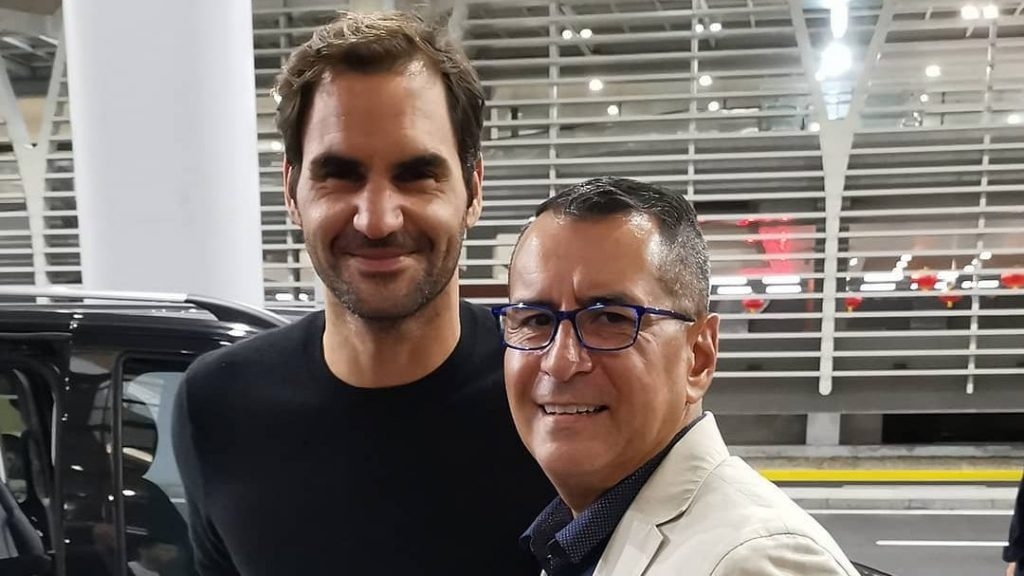The power of the Grand Slams is virtually limitless
Of the many things to emerge from the Covid-19 crisis in tennis, one thing has become clearer than ever; the four Grand Slam events rule the sport.

When the Masters 1000 events of Indian Wells, Miami, and most recently the Rogers Cup in Canada, were cancelled this year due to the Covid-19 pandemic, who was up in arms to ask for them to try to move to another slot by the end of the season? Who was saying that players and the whole sport were in danger? When the Tour was suspended until August, where were the cries of anguish from the tournament directors and the players as dozens of tournaments got deleted from the schedule? Nowhere to be seen.
But the cancellation of Wimbledon made front pages around the world, prompted players to post on social media about how they were going to miss wearing their whites and sent the first real shivers down the tennis spine. Because having to cancel a Grand Slam is the ultimate code red. Of course, mourning Wimbledon 2020 meant mourning a part of tennis history and tradition. But it was also coming to terms with the depth of the disaster currently rocking the tennis world.
Devastated https://t.co/Fg2c1EuTQY pic.twitter.com/cm1wE2VwIp
— Roger Federer (@rogerfederer) April 1, 2020
The Grand Slam events were not safe, meaning the whole sport was in jeopardy. Suffice to see the reactions from players when talks about cancelling the US Open started to rise… They weren’t up in arms about the pain of missing the chance to play a Grand Slam event, they were revolting against the idea of missing the money many are in need of.
The Slams are not fighting for survival, the rest of the Tour is
Also, did Wimbledon just go down into a 2020 oblivion after cancellation? Not at all. Of course, they were helped by the wisdom of having pandemic insurance, but they set up help for their neighbourhood, for the National Health Service (NHS) and decided to organise a replay of classic matches and other video contents behind the tag #WimbledonRecreated. Have you heard about Indian Wells since its cancellation in March? Not that much. They launched the #TennisParadiseProfiles with video highlights of some of their best matches over the years, but it got lost in the void. And in terms of community action of tennis influence, not a lot happened. Yet, it’s supposed to be the most important event after the Majors, regularly chosen as the best event on Tour by the players, and it has the billionaire Larry Ellison as owner.
Roland-Garros and the US Open offered their facilities to their respective cities during the crisis. And backstage since Wimbledon’s cancellation, you keep hearing from them. But the Masters 1000s? All the ATP 500s and 250s? All the WTA Internationals and Premier? Seems we’ve heard more from the Charleston invitational (23-28 June)… But look at the name of the Charleston event: “Credit One Bank Invitational” and you might get a part of the answer.
.@AnisimovaAmanda makes her comeback. 💪@matteksands represents as Team Peace Captain. ✌️
And the weather has the last word again. 🌧️See you on Day 3 of the @CreditOneBank Invitational. #CreditOneBankInvitational pic.twitter.com/d0pEOPywzb
— Tennis Channel (@TennisChannel) June 25, 2020
Those who kept putting themselves out there are the ones who are not suddenly finding themselves wondering about their survival and the state of their sponsors. Like the Mutua Madrid Open, which staged a “virtual pro” event in April, set up to give money to charity. Those who are not currently wondering if they’re going to have to cut staff, budget or ambitions are keeping a voice, even behind the scenes.
Slams are now officially all-powerful in the Tour’s schedule
But for a Tour that’s always been adamant that it was not all about the Slams, well, the past few months haven’t exactly confirmed the theory. It’s enough to look at what happened to Roland-Garros to see the real state of tennis: the French Tennis Federation decided unilaterally to move the tournament to September, with no hesitation at all regarding what it might mean for the ATP and the WTA. Scandal! Yes, for a few days it seems. Then everybody got back to reality: a Major is basically all-powerful. Players, angry at first, got back in line when they started to look at their bank accounts and considered the fact that without this move, the French Open was going to go down with Wimbledon.
Why are they playing the game? To be in the Grand Slam draws. That’s the reality. Where is the leverage from the ATP and the WTA in this case? Were they really going to take ranking points away? Were they going to tell their players not to go? What could they do? We saw the answer: nothing. What a Major wants, a Major gets. Not only because those four events have the tennis history behind them, but mainly nowadays because they have all the money and all the influence.
You need means to show off and influence
That’s why the silence of someone like Ellison, who came to the new Davis Cup rescue, is hardly a good sign. He didn’t even fight for his event to be a possible solution for the US Open when New York was the hotspot of the coronavirus outbreak. Instead, his company Oracle got out of the Oracle Challenger Series and Pro Series. Not one sponsor has opted out from the Majors for now. And with the size of their revenues, not a single one of them is scared of not being back in 2021. Sure, the USTA has already furloughed a part of their staff even before confirming if they were going to try to stage the 2020 edition or not, but they’re still very far from being in jeopardy. Which is absolutely not the case for the smaller ATP and WTA events. Most of the ATP and WTA tournaments don’t have the means to show off, and so they look like staying in the shadow.
Bill Oakes, the chairman of the group representing the ATP 250s told the New York Times that these kind of events makes an average net profit of “about $125,000”, with budgets “around $4 million”. So now imagine what’s going to happen of them if their sponsors, hit by the crisis, pull the plug. When you hear that the Basel ATP 500 is wondering whether to already cancel the 2020 edition, you understand the severity of the situation. If Basel can’t risk holding its event behind closed doors for one year because of costs being too high…
The Majors don’t have to fight for their survival right now, so yes, they’re going to talk. And as their revenues are counted in hundreds of millions of dollars, yes, they’re also going to make sure they can cut all the lines they want to in order to reach the head of the waiting line. And nobody in tennis is going to try to stop them because they’re the ones who can still save the day in 2020: by generating revenues for the players, by sending good vibes to the sponsors, by dragging behind them a few other tournaments. Without the US Open, there’s no Cincinnati Masters 1000. Without Roland-Garros, it’s a fair chance that there might not be a Madrid or a Rome Masters 1000 to build a clay swing.
The Tour is bracing for 2021
The only exceptions to that rule are probably the Rolex Shanghai Masters, with its deep pockets, massive sponsorship and critical influence in Asia, and the ATP and WTA Finals in London and Shenzhen, because of the size of their sponsorships and contracts with the Tour. The Finals are what could still save the budget of the ATP for 2020, as Michael Luevano, director of Shanghai told us earlier this year: “The main revenue streams for the ATP Tour are the Finals: if they can stage Finals, at least in my opinion, then I think they’ll be healthy. But if they can’t stage the Finals there will have to be certain modifications to the business model.”
But to get to the London Finals, you need a ranking that’s legit, and so you need to keep playing a few events this year, and you absolutely need to see some Majors being played too. The WTA is here in the toughest position, as the end of the season of that Tour is mainly played in China, same for its Finals. But there’s no way to be sure that the Chinese Government is going to let this happen: it’s the case for now, but it’s way too soon to be sure it’ll still be the case in October.
And if we’re not hearing a lot from anyone else outside of the Slams, it’s also surely because many are bracing for what could be an ugly battle in 2021. The economy is shrinking around the world, and so sports won’t be the priority for investment and sponsorship. The Tour is going to have to battle for every dollar with all the other professional sports, and also within its own world to make sure the rival events don’t get their share of the pie.
The Masters 1000 and WTA Premier and Premier Mandatory events are not in danger of disappearing but are in danger of having to downsize their ambitions and their prize money. Yet those are the Tour events that are holding up the Tour. When tennis can get back to normal, the Grand Slams will get back to making money, maybe a bit less if the broadcasting rights and sponsorships have to be adjusted, but it’ll still be some massive revenues.
True risk of a one-sided sport
The players know which tournaments they need the most and it’s the Majors, even for the lower-ranked players: not for the glory of being in the draw, but because the money given in qualification and in the first rounds of the main draw is the biggest part of their budget. Nobody makes a living out from Challengers, Futures, ATP 250s or WTA Internationals. And so nobody right now is fighting for them either. And their leverage is nowhere to be seen in a tennis economy where they don’t matter a whole lot. But they’re needed for many players’ rankings, needed for the up and coming players to make their way to the top and they provide many jobs in the industry.
By being more and more Majors-oriented, tennis is actually taking some serious risks that are now obvious with the crisis. The Grand Slam events are properties of their respective federations and played under the ITF banner, not that of the ATP or the WTA. There’s no pressure with the ranking points because players would revolt against their Tour if any action against the points was taken. As much as ATP players have been in a not-so-cold war with the ITF in the last decade, they’re always going to stop at a red line called Major. So the power of these four events on the whole sport is basically limitless.
If tomorrow, the US Open says it’s moving to the middle of the revised ATP and WTA Tour, it would happen. The USTA has even decided not to hold qualifying events, scratching mixed doubles draws, and changing the Grand Slam players’ experience, without anybody having a say in this. Sure, the governing bodies are talking and giving their feedback, but we all know who’ll get the last word. Players know it and that’s why they’ve lately been up in arms against the ITF and their own leadership: their voice, in the end, doesn’t matter that much in the grand scheme of things.
Players know which side they have to be on
Their career mainly now revolves on how they perform at the Grand Slam events, their bank accounts, too. And so you end up with a Tour constantly used as a warm-up for the four blockbusters. How many times has Rafael Nadal said he wanted to win Madrid, Barcelona or Rome because of their respective value and not because it was good preparation for Roland-Garros? Each time he’s been asked about how he was using those events to get ready for Paris.
The ATP Cup; a great lead-in to the Australian Open. Halle and Queen’s; the place to be for getting ready for Wimbledon. Canada, Cincinnati, Washington, Atlanta, Winston Salem; they’re mainly called the US Open Series or the US swing nowadays. And before Covid-19, it was not a huge issue, except for a few egos. In the end, those Tour events were getting the best players, the huge audience on site and on TV, and the money from the sponsors. So everybody could accept to live a bit in the shadow of the Majors.
But with Covid-19, the gap is now massive. And also in terms of what the Tour can do to support itself and its players. “We really pushed for that relief fund”, Anastasia Pavlyuchenkova told us a few weeks ago. “We kept asking the Grand Slam tournaments for it because they’re the only ones able to distribute this kind of money. The ATP and the WTA weren’t prepared for that.”
Tournaments, already fighting for their own survival, weren’t willing to fund players who are independent contractors. And so it took a while to get everybody around the table to find a solution. And that solution was to make the Majors and the ITF contribute as well as the WTA and the ATP, for a $6 million fund. The ITF added a bonus for the lower-ranked players.
The Tour needs to earn back its autonomy
Everywhere you look, there is no more autonomy of the Tour from the Grand Slam events. The whole sport is dependent on four tournaments. The main livelihood of the players depends on them too. Everybody in the street will give you those four names, but how many could name all the Masters 1000 and Premier Mandatory events? How many of the ATP and WTA events can have the visibility and influence all season long of the Majors? How many of the Tour events have also been acting as a support network during the Covid-19 outbreak?
The reality is that the Majors have naturally taken the role of the leaders of the sport, and this time there’s not a voice contesting their hegemony. It’s more the opposite actually: everyone seems happy to let them lead the way and get the job done. But it’s a risky play: the prize money on Tour will be cut because of the economical consequences of the crisis, and so the gap will widen even more with the Grand Slam tournaments. It’s never a good idea to give someone the overall power of one’s way of life, but that’s what might happen with the Tour and so with its schedule and leverage.
There will be a price to pay
It’s also maybe why the leaderships of the ATP and the WTA are starting to talk about merging the Tours, about having a commissioner even… You’re always stronger united when you need to fight for your space and your powers. And it might also be better to have one entity to keep an eye on making sure the cake is shared nicely. It’s totally possible that Covid-19 is going to push the sport to reshuffle the way it’s set up and governed, and it could be for the best.
But it could also mean that some ATP and WTA tournaments and some lower-ranked players are going to pay the price of a sport that would have to focus even more on what product is the surest competitor for winning the sponsors, the viewers and the ticket buyers, whose money is surely not going to rain down on tennis as it was before all this coronavirus nightmare. The Majors will survive, they know it as they also know the power they gained during those trying times. The question is to know who will be standing next to them in the years to come.








